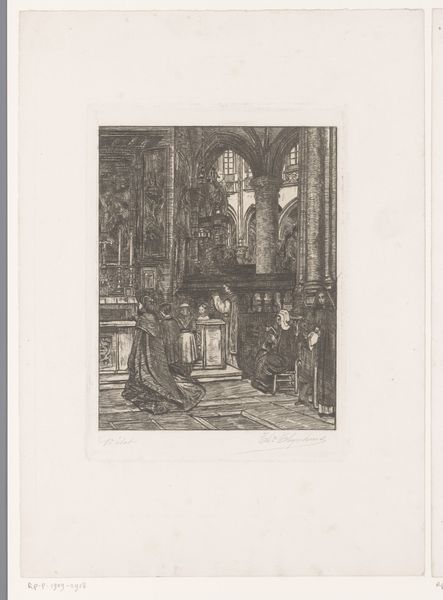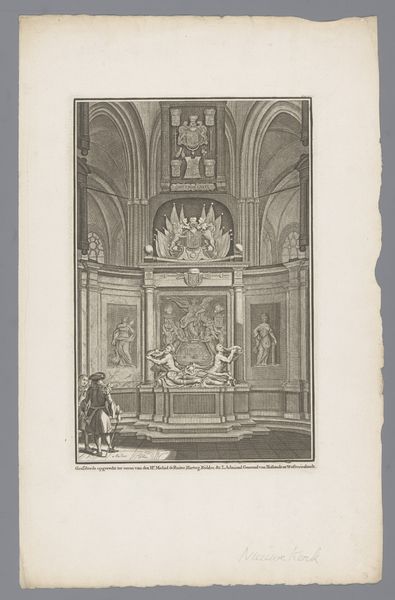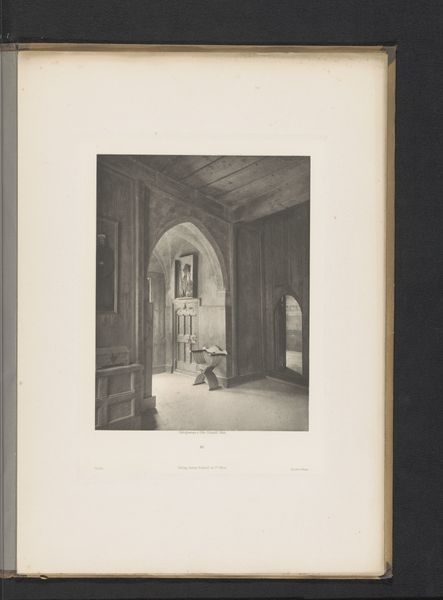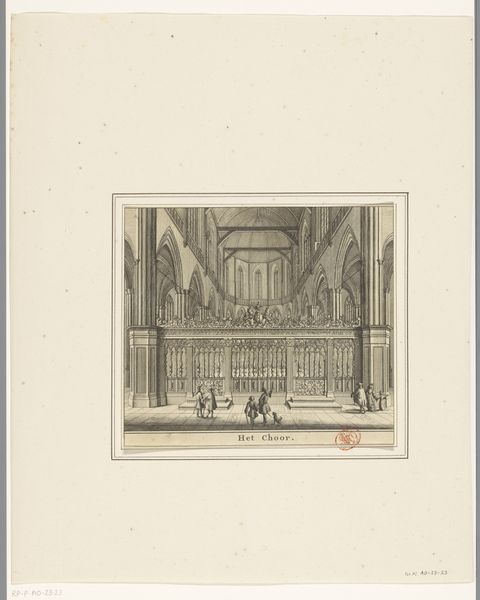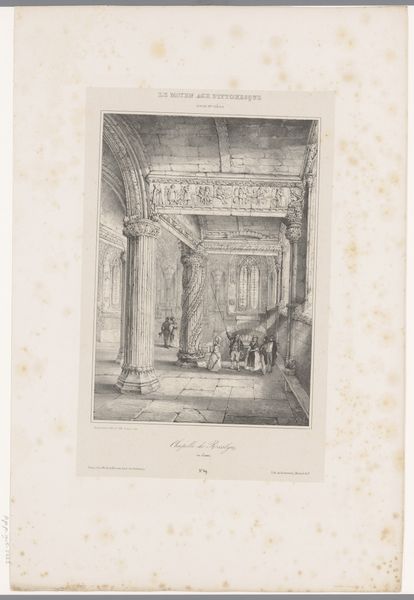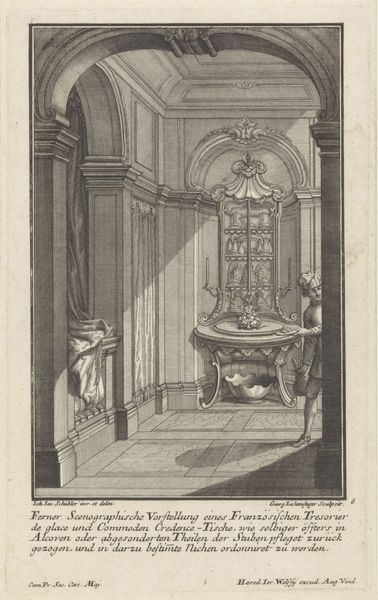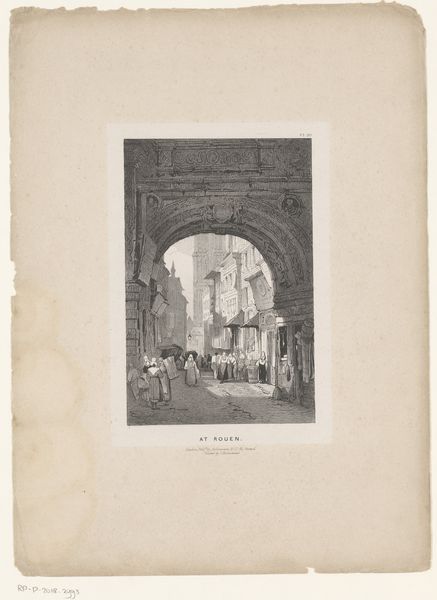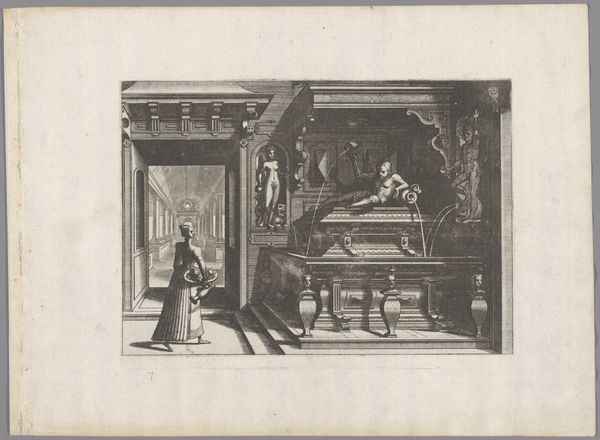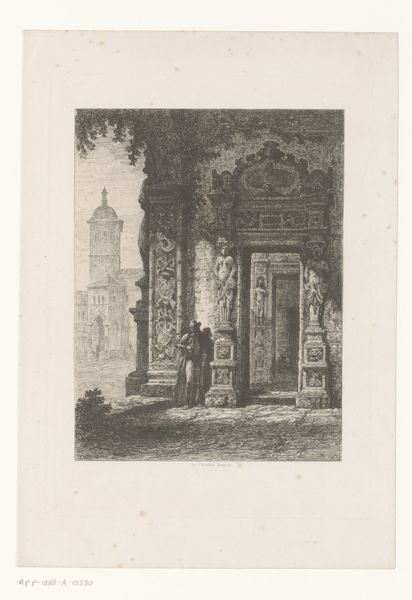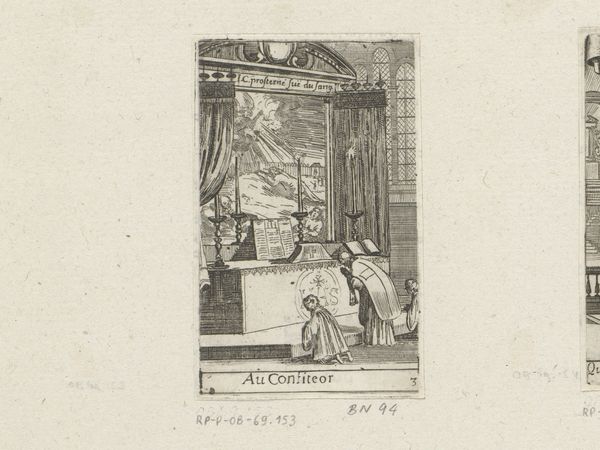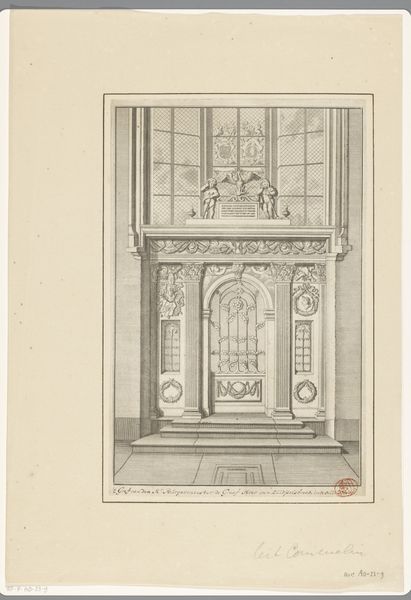
drawing, print, etching, paper, ink
#
drawing
# print
#
etching
#
landscape
#
paper
#
ink
#
geometric
#
realism
Dimensions: height 229 mm, width 180 mm
Copyright: Rijks Museum: Open Domain
Editor: We’re looking at "Tombe van Maria I Stuart," a print by Auguste Ballin from 1874, done in etching, ink, and paper. It depicts what looks like the tomb of Mary Queen of Scots. The atmosphere feels incredibly somber and awe-inspiring, with all that intense detail suggesting a vast and echoing space. What do you make of this scene? Curator: The weight of history is palpable, isn't it? Look at the artist’s hand. He uses those detailed etchings not just to describe, but to *feel* the cold stone, the cavernous emptiness around the tomb. The tomb itself… well, it's more than just stone, it’s a stage where a queen's story—betrayal, execution, and finally, a kind of grudging memorial—plays out for eternity. What do you think Ballin wanted to convey beyond the mere depiction of a tomb? Editor: I hadn’t thought of it that way, as a stage! I guess the setting *is* really dramatic. So, do you think he was trying to make a statement about Mary’s life? Curator: Perhaps. Or perhaps it is more universal. Consider how much time Ballin must have spent with this subject while creating the print. I suspect he’s also showing us how power, pride, and tragedy ultimately fade into echoes in an empty hall, that geometry being a stark reminder of the constraints on life itself. What resonates most with you, though? Editor: I’m struck by the stillness and the silence, that feeling of echoing emptiness like you said. It’s powerful and strangely… peaceful? It makes you wonder about legacies, and what we leave behind. Curator: Indeed. It is a memento mori captured in ink, a poignant reminder that even queens become whispers in stone.
Comments
No comments
Be the first to comment and join the conversation on the ultimate creative platform.
